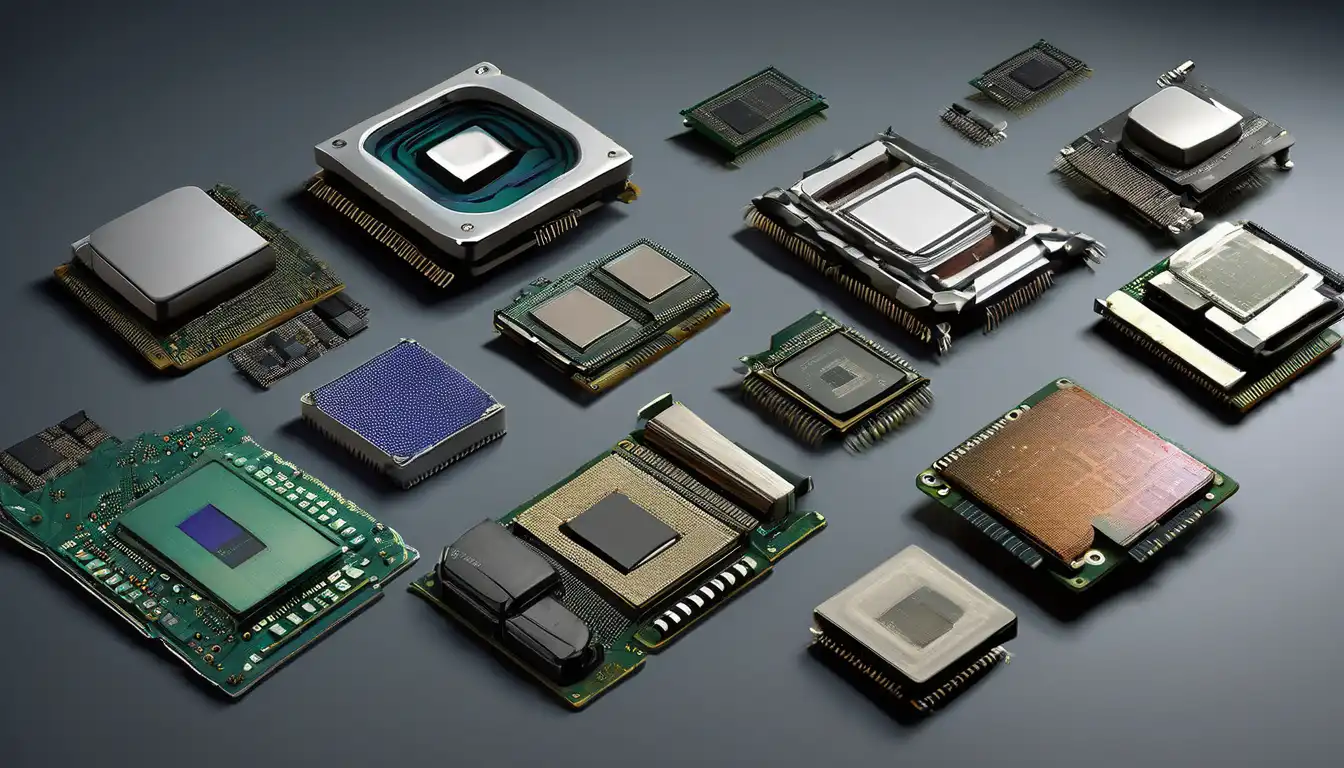The Dawn of Computing: Early Processor Technologies
The evolution of computer processors represents one of the most remarkable technological journeys in human history. Beginning with primitive vacuum tube systems in the 1940s, processors have undergone revolutionary changes that have fundamentally transformed how we live, work, and communicate. The first electronic computers, such as ENIAC, utilized thousands of vacuum tubes that consumed enormous amounts of power and required constant maintenance. These early processors operated at speeds measured in kilohertz, yet they laid the foundation for the digital revolution that would follow.
The Transistor Revolution
The invention of the transistor in 1947 at Bell Labs marked a pivotal moment in processor evolution. Transistors replaced bulky vacuum tubes, offering smaller size, lower power consumption, and greater reliability. This breakthrough enabled the development of more compact and efficient computers. By the late 1950s, transistors had become the standard building blocks for computer processors, paving the way for the second generation of computing technology.
The Integrated Circuit Era
The 1960s witnessed another quantum leap with the development of integrated circuits (ICs). Jack Kilby and Robert Noyce independently invented the IC, which allowed multiple transistors to be fabricated on a single silicon chip. This innovation dramatically reduced the size and cost of processors while improving their performance and reliability. The introduction of ICs made computers more accessible to businesses and research institutions, setting the stage for the personal computing revolution.
Moore's Law and Microprocessors
In 1965, Gordon Moore observed that the number of transistors on a chip was doubling approximately every two years. This observation, now known as Moore's Law, has guided processor development for decades. The first commercial microprocessor, the Intel 4004, debuted in 1971 with 2,300 transistors. This 4-bit processor operated at 740 kHz and demonstrated the potential of putting an entire central processing unit on a single chip.
The Personal Computing Revolution
The 1980s marked the beginning of the personal computing era, driven by increasingly powerful microprocessors. Intel's 8086 and 8088 processors powered the first IBM PCs, while competitors like Motorola and Zilog offered alternative architectures. The introduction of 16-bit and later 32-bit processors enabled more sophisticated software applications and graphical user interfaces. This period saw processor clock speeds increase from a few megahertz to tens of megahertz, with corresponding improvements in performance.
RISC vs CISC Architectures
The 1990s brought significant architectural debates between Reduced Instruction Set Computing (RISC) and Complex Instruction Set Computing (CISC) designs. While Intel's x86 architecture dominated the personal computer market with its CISC approach, RISC processors from companies like IBM, Sun Microsystems, and ARM found success in workstations and embedded systems. This competition drove innovation in both camps, leading to improved performance and efficiency across the industry.
The Multi-Core Revolution
As processor clock speeds approached physical limits in the early 2000s, manufacturers shifted focus to multi-core designs. Instead of increasing single-core performance, companies began integrating multiple processor cores on a single chip. This approach allowed for better parallel processing and improved energy efficiency. Dual-core, quad-core, and eventually processors with dozens of cores became standard, enabling new capabilities in multimedia processing, scientific computing, and artificial intelligence applications.
Specialized Processors and Accelerators
Recent years have seen the rise of specialized processors designed for specific workloads. Graphics Processing Units (GPUs) evolved from simple display controllers to powerful parallel processors capable of handling complex computational tasks. Field-Programmable Gate Arrays (FPGAs) and Application-Specific Integrated Circuits (ASICs) have become increasingly important for accelerating specific algorithms, particularly in artificial intelligence and machine learning applications. This trend toward specialization represents a fundamental shift in processor design philosophy.
Current Trends and Future Directions
Today's processor landscape is characterized by heterogeneous computing architectures that combine general-purpose CPUs with specialized accelerators. The ongoing development of 3D chip stacking, advanced packaging technologies, and new semiconductor materials like gallium nitride and graphene promise continued performance improvements. Quantum computing processors represent the next frontier, with the potential to solve problems that are intractable for classical computers. As we look to the future, processor evolution continues to accelerate, driven by demands for artificial intelligence, edge computing, and sustainable technology.
Sustainability and Energy Efficiency
Modern processor design increasingly prioritizes energy efficiency and sustainability. With growing concerns about power consumption and environmental impact, manufacturers are developing processors that deliver maximum performance per watt. Advances in power management, low-power states, and intelligent thermal management have become critical features in contemporary processor designs. This focus on efficiency extends from mobile devices to data center processors, reflecting the industry's commitment to sustainable computing practices.
The Impact on Society and Technology
The evolution of computer processors has fundamentally transformed nearly every aspect of modern life. From enabling global communication networks to powering scientific research and driving economic growth, processors have become the engines of the digital age. The continuous improvement in processing power has made possible technologies that were once science fiction, including smartphones, autonomous vehicles, and advanced medical imaging systems. As processor technology continues to advance, we can expect even more profound changes in how we interact with technology and each other.
The journey from vacuum tubes to modern multi-core processors demonstrates the incredible pace of technological innovation. Each generation of processors has built upon the achievements of its predecessors while introducing new capabilities and possibilities. As we stand on the brink of new computing paradigms like quantum and neuromorphic computing, the evolution of processors shows no signs of slowing down. The future promises even more remarkable advances that will continue to reshape our world in ways we can only begin to imagine.
